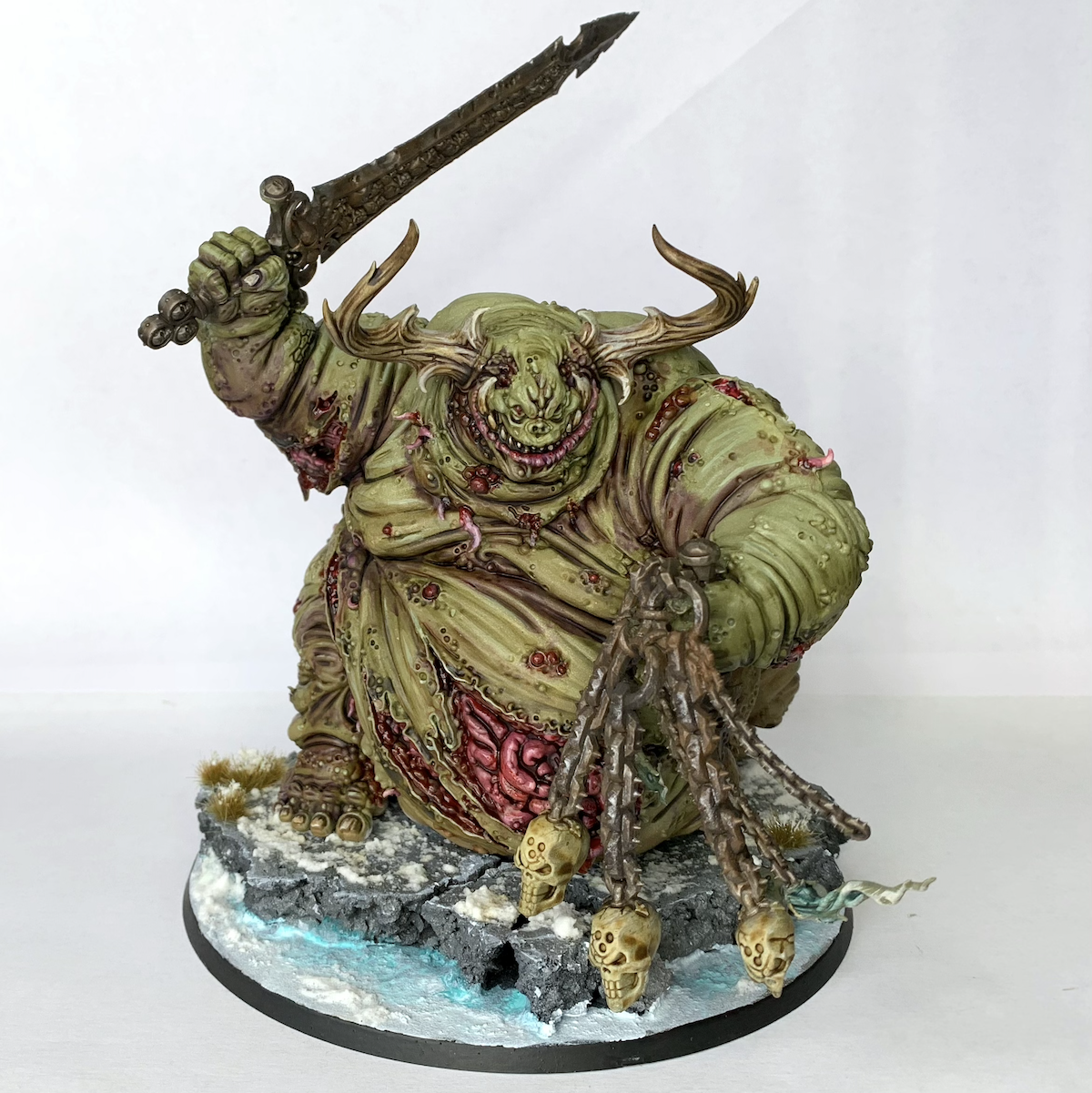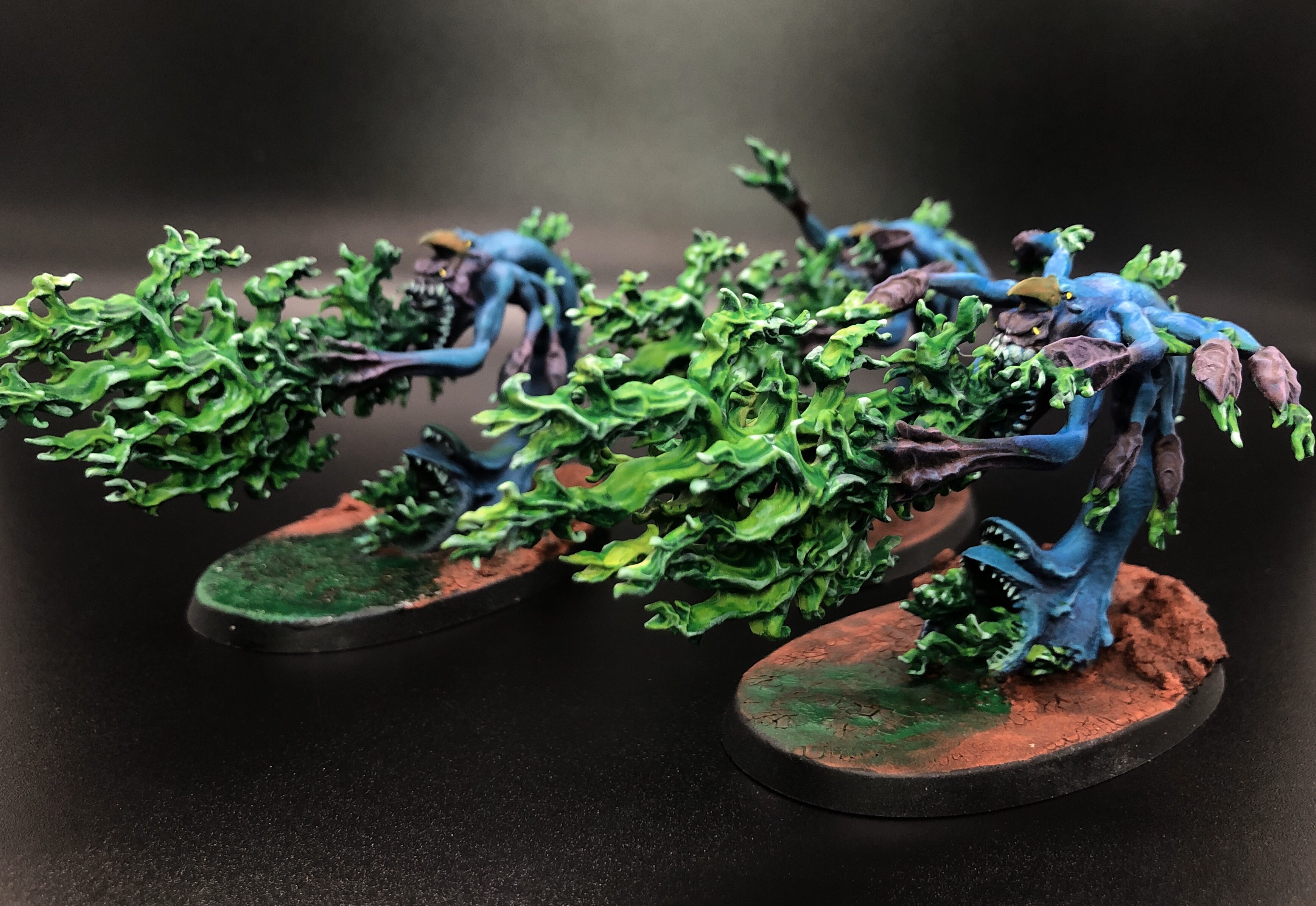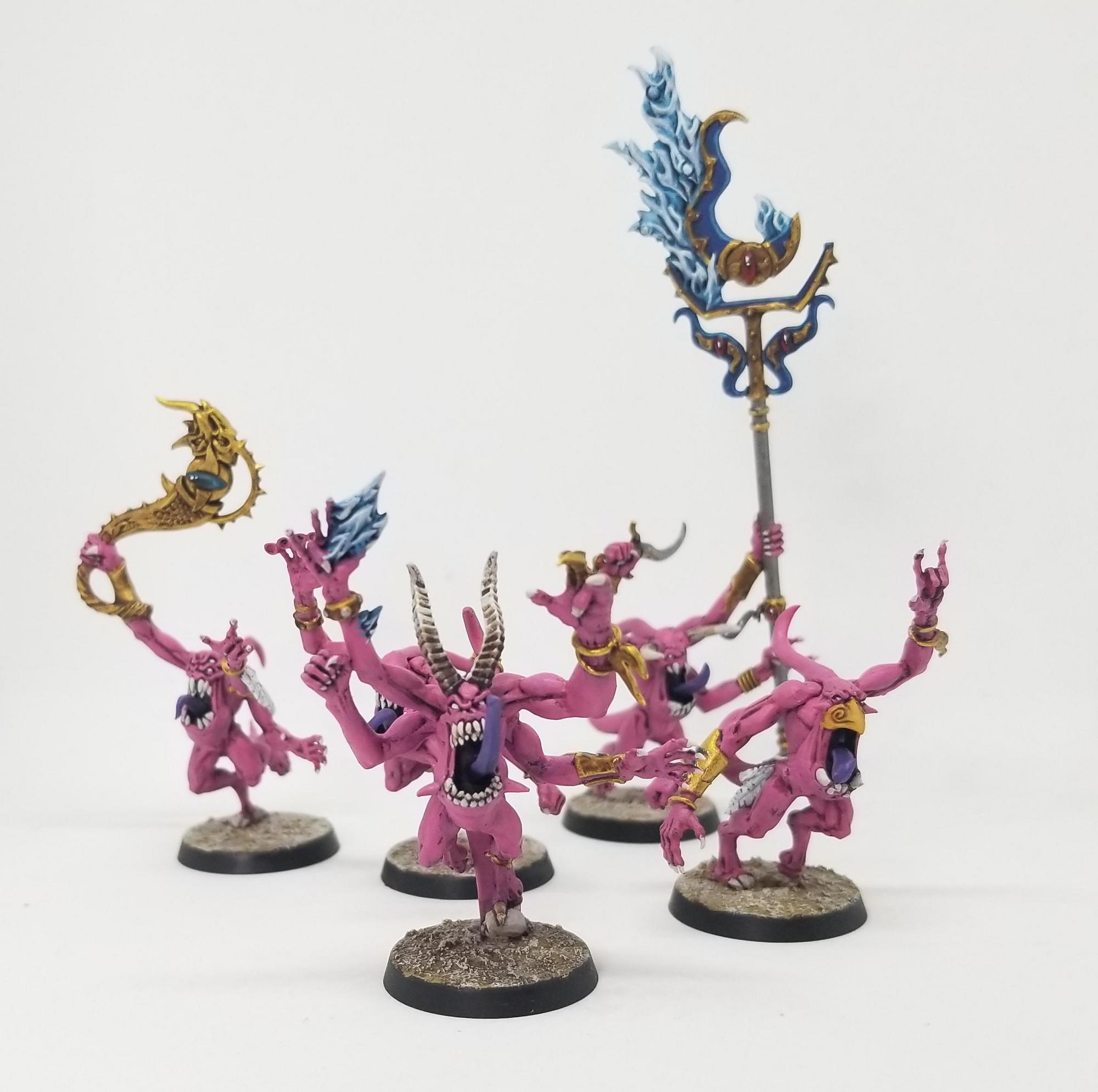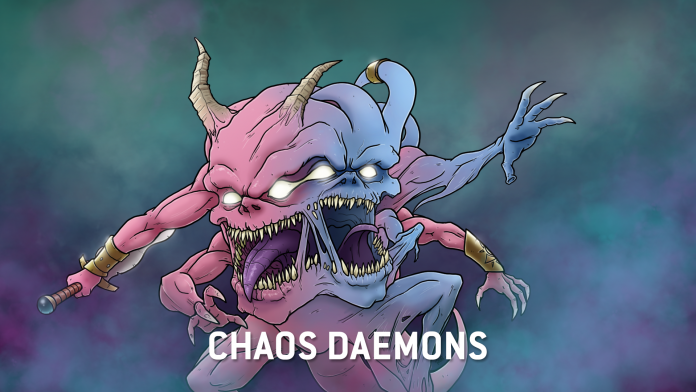In this series of articles we take a deep dive into a specific detachment for a faction, covering the faction’s rules and upgrades and talking about how to build around that faction for competitive play. In this article, we’re covering the Daemonic Incursion Detachment for Chaos Daemons.
The Tenth Edition Indexes gave Chaos Daemons some solid rules to work with, giving them a Detachment which more or less models an army of daemons united across various gods, often under the direction of Be’lakor. It’s not the most powerful detachment in the game but it boasts some solid abilities which work well with the faction’s ability to Deep Strike units.
![]()
Detachment Overview
The Daemonic Incursion represents the unified forces of Chaos, with gods devoted to each of the ruinous powers coming together to lay siege to the physical universe. There are upgrades associated with each of the Dark Gods here, and you’re free to take greater daemons of every variety as well as Be’lakor, the first Daemon Prince. The Detachment’s core rule revolves around letting you Deep Strike only 6″ away from opponents, setting up nasty charges and working very well with Be’lakor’s The Dark Master Aura.
As a quick refresher, the Army rule for Chaos Daemons is The Shadow of Chaos. If you’re playing Daemons then parts of the battlefield can be within your Shadow of Chaos. Your Deployment Zone is always in Shadow, while at the start of any phase, No Man’s Land is considered to be in your Shadow if you control at least half of the markers in it, and your opponent’s Deployment Zone is considered to be in your shadow if you control at least half of the markers in it.
While enemy units are within your army’s Shadow of Chaos, they take a -1 to their Battle-shock tests and suffer D3 mortal wounds each time they fail.
Detachment Rule: Warp Rifts
Each time a LEGIONES DAEMONICA unit from your army is set up on the battlefield using the Deep Strike ability, if it is set up wholly within your army’s Shadow of Chaos, it can be set up anywhere that is more than 6″ horizontally from all enemy models, instead of more than 9″.
This is very powerful, as it essentially allows you to set up for nearly guaranteed charges out of Deep Strike with some very powerful melee threats. There are a few ways to use this – you can certainly employ a strategy that uses fast units to capture objectives in No Man’s Land to extend your Shadow of Chaos to include No Man’s Land – but the real value here is with Be’lakor. Specifically, Be’lakor’s The Dark Master Aura ability means that the area wholly within 6″ of him is always in your army’s Shadow of Chaos. This is one of the big reasons to take Be’lakor, as it means he can act as the lightning rod for your other units to arrive around. He can also be used to chain arrivals – Be’lakor can himself drop onto the battlefield more than 9″ away from an enemy, then you can drop a unit held in reserves within 6″ of him and just outside 6″ away from an enemy unit, and ready to charge. This is particularly great for units like the Keeper of Secrets or Skarbrand, who aren’t nearly as fast or durable as some of the other greater daemons but want to be in melee combat.

Enhancements
The Daemonic Incursion Detachment gives you one option for each Chaos God. They’re all pretty useful.
- A’rgath, the King of Blades (20 points) – Goes on a Khorne model. Add 1 to the Attacks and Strength characteristics of the bearer’s melee weapons. While the bearer is in your army’s Shadow of Chaos, add 2 to those characteristics instead. This is a solid upgrade, though not necessarily crucial to have. Giving a Bloodthirster more attacks is the real value, as added strength doesn’t mean too much on weapons which are already S14+.
- Soulstealer (15 points) – Slaanesh model. Each time the bearer destroys an enemy model with a melee attack, roll one D6, adding 1 to the result if the bearer is within your Shadow of Chaos. On a 4+, the bearer regains 1 lost wound. You generally want to put this on your Keeper of Secrets, but it’s easily the most disposable of the four Enhancements – something you’ll take if you have the points but not something you have to take.
- The Endless Gift (30 points) – Nurgle model. The bearer has the Feel No Pain 5+ ability, which increases to 4+ while the model is within your army’s Shadow of Chaos. You have to take this 100% of the time on a Great Unclean One. The benefit is huge – having a 5+ Feel No Pain is mathematically equivalent to a 50% increase in wounds, and a 4+ gives you a 100% boost, meaning that while your Great Unclean One is in the Shadow, he functionally has 40 wounds. Add to that T12 and a 4+ invulnerable save and you basically have the reason he’s showing up in every Daemons list now.
- The Everstave (25 points) – Tzeentch model. Add 1 to the Strength of the bearer’s Ranged weapons and increase their range by 3″. While you’re within the army’s Shadow of Chaos, you get +2 to the Strength of your ranged attacks and increase their range by 6″. This is something you windmill slam on your Lord of Change, as it combines with his own aura for +1 Strength on ranged attacks to push his Bolt of Change to S11 base and S12 when you’re in your Shadow of Chaos. That turns him into an absolute terror, wounding most vehicles in the game on a 3+, and turning him into a nightmare for heavy infantry. The extra range boost is also nice, as it lets you shoot across no man’s land.

Stratagems
There are six Stratagems in the Daemonic Incursion Detachment, and none of them are locked to a specific god. These are some really powerful Stratagems to work with, and they offer a ton of utility. They’re all priced to move at 1 CP.
- Corrupt Realspace (Strategic Ploy, 1 CP) – Used at the start of any Command Phase – pick a Daemons unit from your army in range of an objective marker you control. That objective marker becomes Corrupted and remains under your control until an opponent controls it, and in addition, the area of the battlefield within 6″ of that objective marker is considered to be within your Shadow of Chaos. This is incredibly good – being able to “sticky” objectives is always great, but the added benefit of shadow here is huge. This is particularly great for when your Great Unclean One wants to sit on an objective at midfield – you can use this to sticky the objective he sits on and guarantee he’ll get his 4+ Feel No Pain from The Endless Gift, ensuring you’ll be able to hold that objective most of the game. Remember that you can use it in your opponent’s Command phase to turn on Shadow for your opponent’s Shooting phase or to Rapid Ingress.
- Warp Surge (Strategic Ploy, 1 CP) – Used in your charge phase on a unit from your army that is within your Shadow of Chaos. Until the end of the phase, your unit can declare a charge even if it Advanced. Another great Stratagem, this gives you a lot of value if you have fast units which can quickly move across the table and hold objectives – remember that Shadow of Chaos checks for control at the start of a phase and lasts all phase, so you can use this to Advance onto an objective, gain control of it in your Movement phase, use that control to put No Man’s Land in your Shadow of Chaos, then charge off the objective in your Charge phase. This also means that Be’lakor can just always advance and charge.
- Draught of Terror, (Battle Tactic, 1 CP) – Used in your Shooting phase or the Fight phase. Pick a Daemons unit from your army and until the end of the phase, improve the AP of their weapons by 1. Additionally, if they’re hitting a Battle-shocked unit, they can re-roll the Wound roll. That second rider is more a nice to have but this is great when you’re going up against heavier infantry and targets with a 2+ save. It can be particularly nasty on something like Daemonettes, who come with AP-1 claws and Devastating Wounds.
- Denizens of the Warp (Strategic Ploy, 1 CP) – Used in your Movement phase – one of your Daemons units arriving from Deep Strike can be set up anywhere more than 3″ away from all enemy models, but can’t charge this turn. This is another fantastic Stratagem, and incredibly good for stealing away an opponent’s home objective with something like a unit of Poxwalkers, who can then hang out and be a real pain in the ass to remove. It’s also just fine for stealing objectives at mid-table as well and it’s a great Stratagem for getting a unit of Horrors into the right position as well. It also combines well with The Realm of Chaos to give you a nearly unstoppable up-down strategy for scoring certain fixed secondaries like Behind Enemy Lines.
- The Realm of Chaos (Battle Tactic, 1 CP) – Used at the end of your opponent’s turn. Pick one daemons unit, or two that are within your Shadow of Chaos and not within Engagement Range of enemy units, and put those back into Strategic Reserves. They arrive back on the battlefield in the Reinforcements step of your next Movement phase using the Deep Strike ability. It’s expensive CP-wise, but having an up-down ability is great for ensuring you can reliably score certain fixed secondaries, and if you’re going second you can use it to get a turn 1 Deep Strike. This Stratagem just gives you a ton of flexibility to put units wherever you need them without having to put them out in the open and combines with Be’lakor’s Shadow of Chaos aura to just be perpetually useful.
- Daemonic Invulnerability (Battle Tactic, 1 CP) – Used in your opponent’s Shooting phase, after they pick targets. Until the end of the phase, you can re-roll your invulnerable saves of 1. This is solid in a pinch, and will do its best work on your big greater Daemons where having a lot of incoming attacks makes it marginally better than saving your CP for a single re-roll. That said, you’re often going to be spending your CP on other things.

Playing This Detachment
As you might have noticed from the way this Detachment uses the Shadow of Chaos, an army using this Detachment really wants to take Be’lakor. His ability to protect nearby units from ranged attacks outside of 18″ is good, but what really makes the army go is his The Dark Master Aura, which makes the area of the battlefield within 6″ of him part of your Shadow of Chaos. This means you can freely deep strike your daemons in to the area near him as long as they’re more than 6″ from enemy units, and you can use this to chain Deep Strikes, dropping Be’lakor outside 9″ and then a Keeper of Secrets in the newly created Shadow Realm outside 6″ from your target, and then make an easy charge out of Deep Strike. It’s also helpful for getting the most out of the Realm of Chaos Stratagem, since you can use Be’lakor to put units in your Shadow so you can put two units into reserves (including himself, just make sure you pick him up second), and Be’lakor can always Advance and Charge via the Warp Surge Stratagem.
Running Be’lakor your early game plan is going to be using his Wreathed in Shadows aura early to avoid taking shooting on your big units as your smaller, faster units – usually a mix of Flesh Hounds and Bloodcrushers – move into position on objectives, with your Great Unclean One right behind, who can then sticky whatever objective he’s on with the Corrupt Realspace Stratagem and sit on it for the rest of the game. Be’lakor can either move forward himself or drop back into Reserves and emerge the following turn, dropping a Keeper of Secrets or Bloodthirster/Skarbrand on your opponent’s head when he arrives. Your Lord of Change is more a ranged threat in this army, and with the Everstave it becomes a really nasty shooting threat. If you’re looking for more ranged firepower generally you can support the Lord of Change with a Tzeentch Soul Grinder, which adds a very strong 48″ Blast attack to its Harvester Cannon (which benefits from the Lord of Change’s +1 Strength aura), making it a great anti-vehicle/monster threat.
Of course, with all that said, Be’lakor isn’t nearly the must-take he used to be. While the Daemonic Incursion Detachment definitely plays to his strengths, in more melee-heavy metagames his ability to prevent shooting is much less useful. When you aren’t worried about being blasted off the table and the enemy is coming to you, he doesn’t give you nearly as much bang for your buck as some of the other Greater Daemon options. As a result, we’ve started to see lists which drop Be’lakor in favor of another greater daemon.
Because of their intense mobility and access to cheap action units, Chaos Daemons armies can work well doing either Tactical or Fixed objectives. On Fixed objectives their ability to repeatedly drop units in enemy Deployment Zones really opens things up for secondary missions like Behind Enemy Lines or Deploy Teleport Homers, where it can be nearly impossible to stop a unit from dropping just over 3″ away and scoring, and something like Plaguebearers can be tough to remove late-game if you’ve already spread out of your Deployment Zone. The biggest challenge you’re going to face when it comes to action secondaries is going to be protecting your smaller, cheaper units. You need to reliably keep up the pressure with your big threats to keep opponents from just clearing your smaller units off the board or you’ll find yourself unable to reliably score some secondary missions, or having to Investigate Signals with a Lord of Change.
On the exposure side, while successful Daemon lists tend to rely on 4-5 big daemons to saturate the board with hard-to-remove threats, actually removing all of these is a big ask for most lists and so Bring it Down isn’t as strong a play as you’d think into most Daemons armies.
Final Thoughts
That wraps up our look at the Daemonic Incursion Detachment, which is surprisingly one of the more powerful in the game from a “pure value generated by Stratagems and its army rule” standpoint. Of course, that doesn’t always translate to massive success on the tabletop – the army’s datasheets and point costs are a big part of that – but the Detachment gives you some really great tools to work with.
Have any questions or feedback? Drop us a note in the comments below or email us at contact@goonhammer.com.


